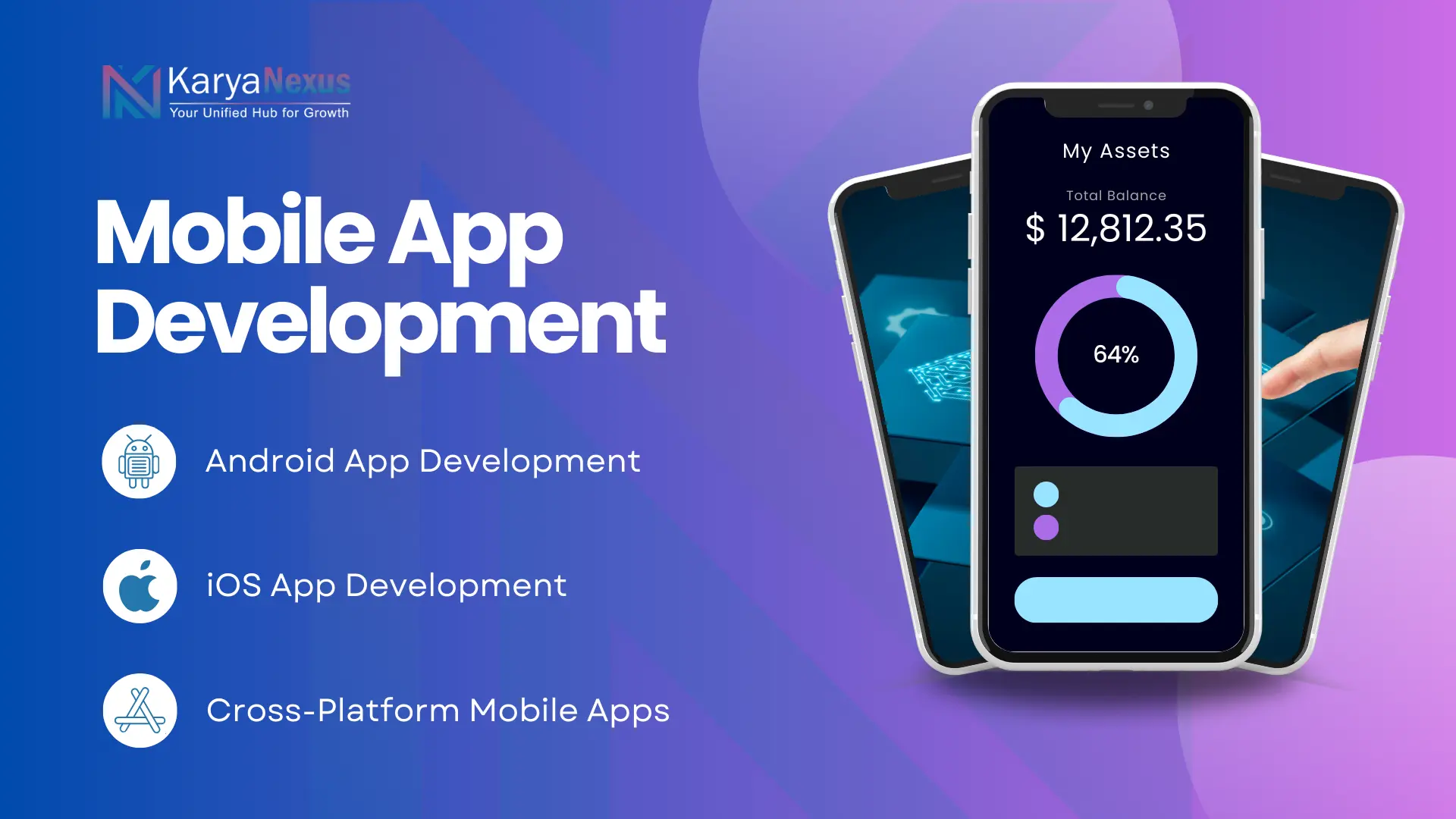If you’re thinking about building a mobile app for your business, you’re already on the right track. Apps are where people spend most of their time, over 90% of smartphone usage is inside apps, not browsers. For businesses, that means a direct line to customers, more engagement, and new revenue opportunities.
The tricky part is deciding how to build it. Do you go with an Android app, an iOS app, or a cross-platform app that runs on both? Each option has its strengths, challenges, and cost differences. Let’s break it down in plain language so you can make an informed choice.
Android App Development
Android is the most widely used operating system, holding more than 70% of the global market. If your goal is reach—especially in markets like India, Asia, and Africa, Android is often the first choice.
💰 Starting cost: ₹50,000*
Pros:
- You reach a massive global audience.
- More flexibility in features and design since Android is open-source.
- Publishing is simpler and cheaper on the Play Store.
- Works well with Google services (Maps, Drive, Pay, etc.).
Cons:
- So many different devices and versions mean more testing.
- On average, Android users spend less on apps than iOS users.
Our take:
If you’re a startup or a business that wants to reach the most people at the lowest entry cost, Android is a smart first step.
iOS App Development
iOS has fewer users globally (around 28%), but they’re concentrated in high-income regions like the US, UK, and Europe. These users also tend to spend more on apps and subscriptions.
💰 Starting cost: ₹100,000*
Pros:
- Higher revenue potential—iOS users spend nearly twice as much as Android users.
- Apple’s ecosystem is secure and stable.
- Apps run smoothly because Apple controls both hardware and software.
- Strong brand perception—having an iOS app signals quality.
Cons:
- Development is costlier than Android.
- Apple’s App Store policies can slow down the approval process.
- Smaller audience outside premium markets.
Our take:
If your target market is professionals, high-income customers, or countries where Apple dominates, iOS is worth the investment. It delivers fewer users but better returns.
Cross-Platform Mobile Apps
Cross-platform frameworks like Flutter or React Native let you write one app and launch it on both Android and iOS. This approach saves time and money but comes with trade-offs.
💰 Starting cost: ₹150,000*
Pros:
- One codebase works everywhere—saves cost and time.
- Faster to market since you don’t need two separate apps.
- Easier to maintain and update.
- Consistent user experience across devices.
Cons:
- Native apps still perform better, especially for heavy features.
- Some device-specific features are harder to implement.
- Apps can be slightly larger in size.
Our take:
If you want to cover both Android and iOS quickly without doubling your budget, cross-platform is the practical middle ground. Great for startups or businesses testing an idea in the market.
Quick Comparison
| Feature | Android App | iOS App | Cross-Platform App |
|---|---|---|---|
| Starting Cost | ₹50,000* | ₹100,000* | ₹150,000* |
| Audience Reach | Very high | Premium users | Both combined |
| Revenue Potential | Moderate | High | Balanced |
| Speed to Launch | Medium | Medium | Fastest |
| Best For | Mass reach | Premium markets | Budget + speed |
Common Mistakes to Avoid
We’ve seen businesses make the same mistakes again and again:
- Choosing the wrong platform.
Don’t assume—look at your audience first. If most of your users are in India, Android makes sense. If they’re in the US, iOS may be smarter. - Underestimating long-term costs.
Building the app is just the start. Maintenance, updates, and scaling all cost money. - Overloading the first version.
You don’t need every feature on day one. Start with an MVP (minimum viable product) and add features based on feedback. - Ignoring user experience.
Clunky apps don’t survive. A smooth, simple design beats complexity. - Forgetting about marketing and visibility.
Even the best app fails if people don’t know it exists. App Store Optimization (ASO) and promotion are part of the process.
FAQs
Android apps start at ₹50,000*, so they’re the most budget-friendly.
iOS apps usually deliver higher revenue per user.
Cross-platform is often the right choice because it covers both platforms without doubling costs.
Simple apps: 2–4 months
Medium complexity: 4–8 months
Advanced apps: up to 12 months
Yes, regular updates keep your app secure, compatible, and engaging.
Why Work With Karyanexus Solutions?
We know that an app isn’t just code—it’s a business tool. At Karyanexus Solutions, we:
- Build Android, iOS, and cross-platform apps tailored to your goals.
- Use modern frameworks like Kotlin, Swift, Flutter, and React Native.
- Design for performance, security, and scalability.
- Provide full support from idea to launch—and beyond.
Whether you’re building your first app or scaling to millions of users, we help you choose the right path and execute it the right way.
Final Thoughts
- Go with Android if you want reach at a lower cost.
- Choose iOS if you’re after premium users and better ROI.
- Pick Cross-Platform if you want both worlds without doubling your budget.
Ready to take the next step? Let’s build an app your customers will love.
👉 Contact Karyanexus Solutions today.
✅ Note: Costs mentioned are starting ranges and may vary with project complexity.





